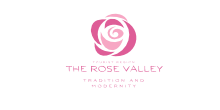The earliest traces of life in Karlovo date back to the Neolithic Age /6th millennium BC/. A Neolithic settlement existed in the Yasa Tepe area west of the town. The Thracian tribes that inhabited the lands around today's Karlovo during the Late Iron Age / 6th century BC. – 1st century/, according to the researchers, they were included in the collective ethnonym Odryssae.
Several settlements and fortresses existed in the vicinity of today's town: Karlovsko Kale, a small late antique fortress, dating back to the 4th – 6th centuries. It is located on a mountain slope above the Besh bunar park; Sushitsko Kale is located on the southern slopes of Stara Planina, east of the current Sushitsa district, continued to exist in the 12th-14th centuries; the fortress above the St. Trinity Chapel, northeast of Karlovo, existed also in the 12th-14th centuries.
Kurshum Mosque (covered with lead sheets) was built in 1485 by the Ottoman military leader Ali Bey, son of Karla. Kurshum Mosque today is the oldest preserved architectural monument of culture in the town.
In the town of Karlovo, there are currently around 115 houses that are cultural monuments. During the National Revival, more than 30 types of crafts developed in the town: gaitandzhiistvo (textile braiding), rose production, basmadzhiystvo (art printing on textile), copper-making, leather-working, weaving, goldsmith production, silk-making, etc. Karlovo emerged as an economically prosperous town with an exceptional rise in crafts and trade, which went beyond the borders of the Ottoman Empire and was mainly in the hands of the Bulgarian manufacturers and traders. The large merchants Puliev, Geshov, Hadzhidimitrov, Georgiev and others developed a wide commercial activity in all markets of the Ottoman Empire, with Wallachia, Moldova, Russia, France, England, etc.
In the 17th century, there as a "masterful man of letters" and teacher worked Avram Yerei Dimitrevich, representative of the Karlov-Adjara School of Literature. During the National Revival, Karlovo was an important educational and literary centre. Prominent National Revival pedagogues and educators worked there: Rayno Popovich, Botyo Petkov – the father of Hristo Botev, Hristo Popvasilev, Brayko Hadzhigenov, Dimitar Popov and many others.
"In the middle of the 19th century, the two churches were built: Dormition of the Holy Mother /restored in 1851/, in which in 1859 Vasil Levski was ordained a hierodeacon, and St. Nikolay /1847/, in which the holiday of Slavic writing was celebrated for the first time in 1858, and on January 1, 1878 the First town Council was elected. The grave of Vasil Levski's mother, Gina Kuncheva, is in the churchyard.
In 1892, Karlovo participated in the First Plovdiv Exhibition. The pavilion was built with the funds of Evlogii Georgiev, in which works of local industry and crafts were exhibited. Karlovo exhibitors received three gold, 19 silver, 13 bronze medals and 2 honorary diplomas.
In 1926, one of the first hydroelectric power plants in Bulgaria, the Stara Reka hydroelectric power plant, was built; the Plovdiv – Karlovo railway line /1933/, the Wine Cellar /1933/; banks, factories and schools were built.
Karlovo is the birthplace of a number of educators, public figures, donors, artists, military figures, builders of modern Bulgaria.
